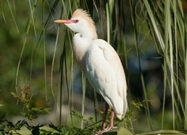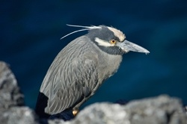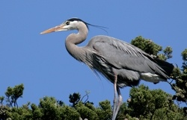Migratory fowl (egrets, herons, barn swallows etc.) usually arrive during the months of March & April of each year.
Although this natural cycle can be beautiful, the challenges associated can be overwhelming. These concerns relate to noise, odor and significant amounts of excrement that covers streets, sidewalks, cars, mailboxes and other public and private property.
City staff is unable to address any of these issues while the birds are nesting due to their "protected" status provided by the Migratory Bird Treaty Act. The City needs the help of its residents to address this challenge proactively. We encourage you to take the steps below to protect your trees and to remain vigilant in observing bird activity in your neighborhood:
- Thin tree canopy to allow sunlight to shine between limbs and other trees
- Remove old nesting material
- Use reflective tape, scare-eye balloons or other visual deterrents to make your trees less attractive to migratory birds in search of viable nesting sites
- If you notice egrets or herons in your trees, use water hose or signal horns to scare birds from the trees
For more informaton regarding Texas Parks and Wildlife Migratory Bird Regulations Click On the link below:
http://tpwd.texas.gov/regulations/outdoor-annual/hunting/migratory-game-bird-regulations/
For more informaton regarding U.S. Fish and Wildlife MigratoryBird Regulations Regulations:
http://www.fws.gov/migratorybirds/RegulationsandPolicies.html
We are protected...
Identifying Migratory Birds of Interest:
|
Cattle Egret
|
Yellow-Crowned Night Heron
|
|
Snowy Egret
|
Great Egret
|
|
Great Blue Heron
|
We are also protected...
Other Protected Species - nongame species
For more information about migratory birds and other protected species in Texas, please contact the Texas Department of Parks and Wildlife at 972-293-3841.
To report a violation or concern contact the Department of Health Services M-F 8a.m. – 5p.m. 972-875-1234 or click here





